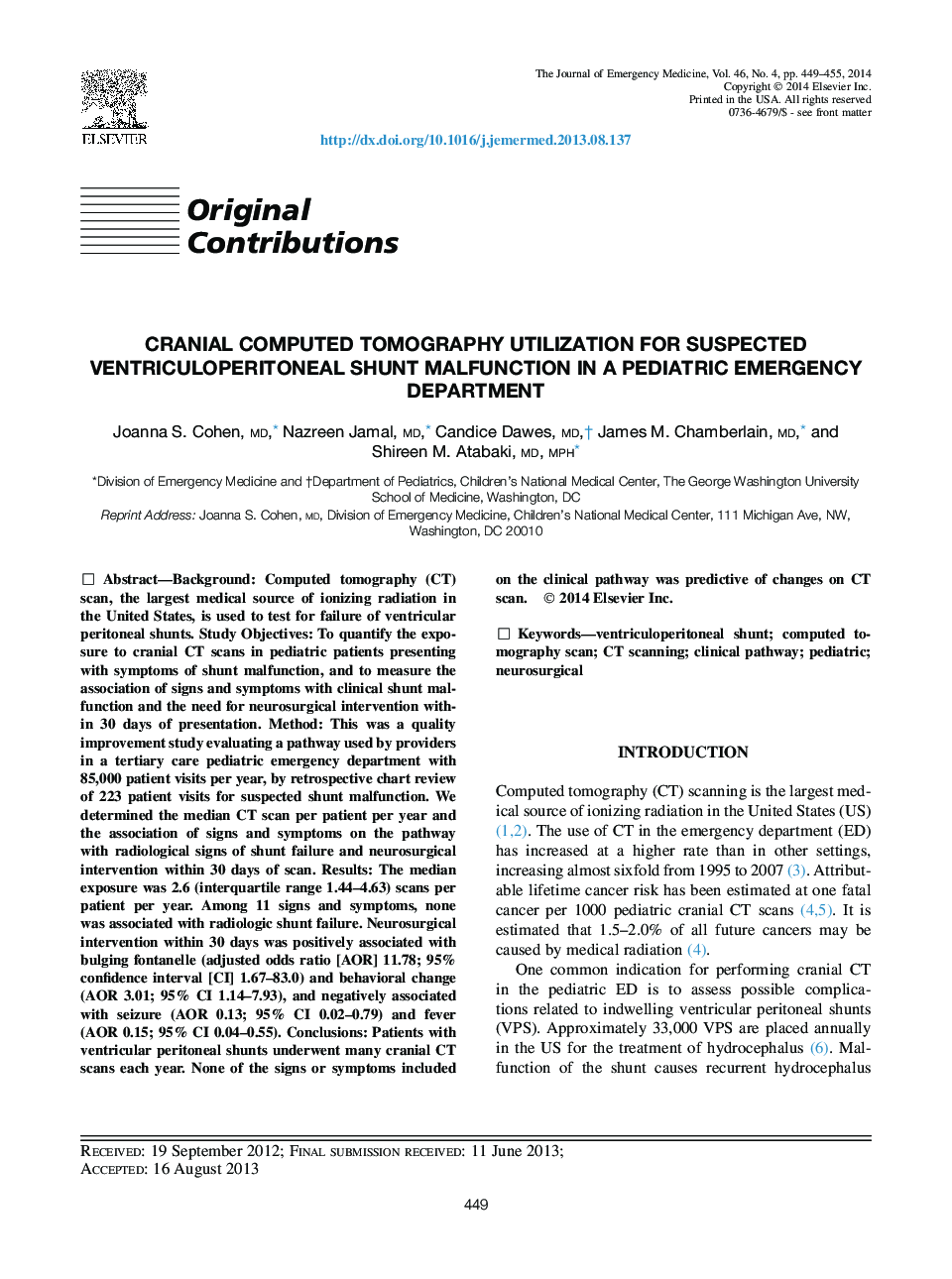| Article ID | Journal | Published Year | Pages | File Type |
|---|---|---|---|---|
| 3247401 | The Journal of Emergency Medicine | 2014 | 7 Pages |
BackgroundComputed tomography (CT) scan, the largest medical source of ionizing radiation in the United States, is used to test for failure of ventricular peritoneal shunts.Study ObjectivesTo quantify the exposure to cranial CT scans in pediatric patients presenting with symptoms of shunt malfunction, and to measure the association of signs and symptoms with clinical shunt malfunction and the need for neurosurgical intervention within 30 days of presentation.MethodThis was a quality improvement study evaluating a pathway used by providers in a tertiary care pediatric emergency department with 85,000 patient visits per year, by retrospective chart review of 223 patient visits for suspected shunt malfunction. We determined the median CT scan per patient per year and the association of signs and symptoms on the pathway with radiological signs of shunt failure and neurosurgical intervention within 30 days of scan.ResultsThe median exposure was 2.6 (interquartile range 1.44–4.63) scans per patient per year. Among 11 signs and symptoms, none was associated with radiologic shunt failure. Neurosurgical intervention within 30 days was positively associated with bulging fontanelle (adjusted odds ratio [AOR] 11.78; 95% confidence interval [CI] 1.67–83.0) and behavioral change (AOR 3.01; 95% CI 1.14–7.93), and negatively associated with seizure (AOR 0.13; 95% CI 0.02–0.79) and fever (AOR 0.15; 95% CI 0.04–0.55).ConclusionsPatients with ventricular peritoneal shunts underwent many cranial CT scans each year. None of the signs or symptoms included on the clinical pathway was predictive of changes on CT scan.
